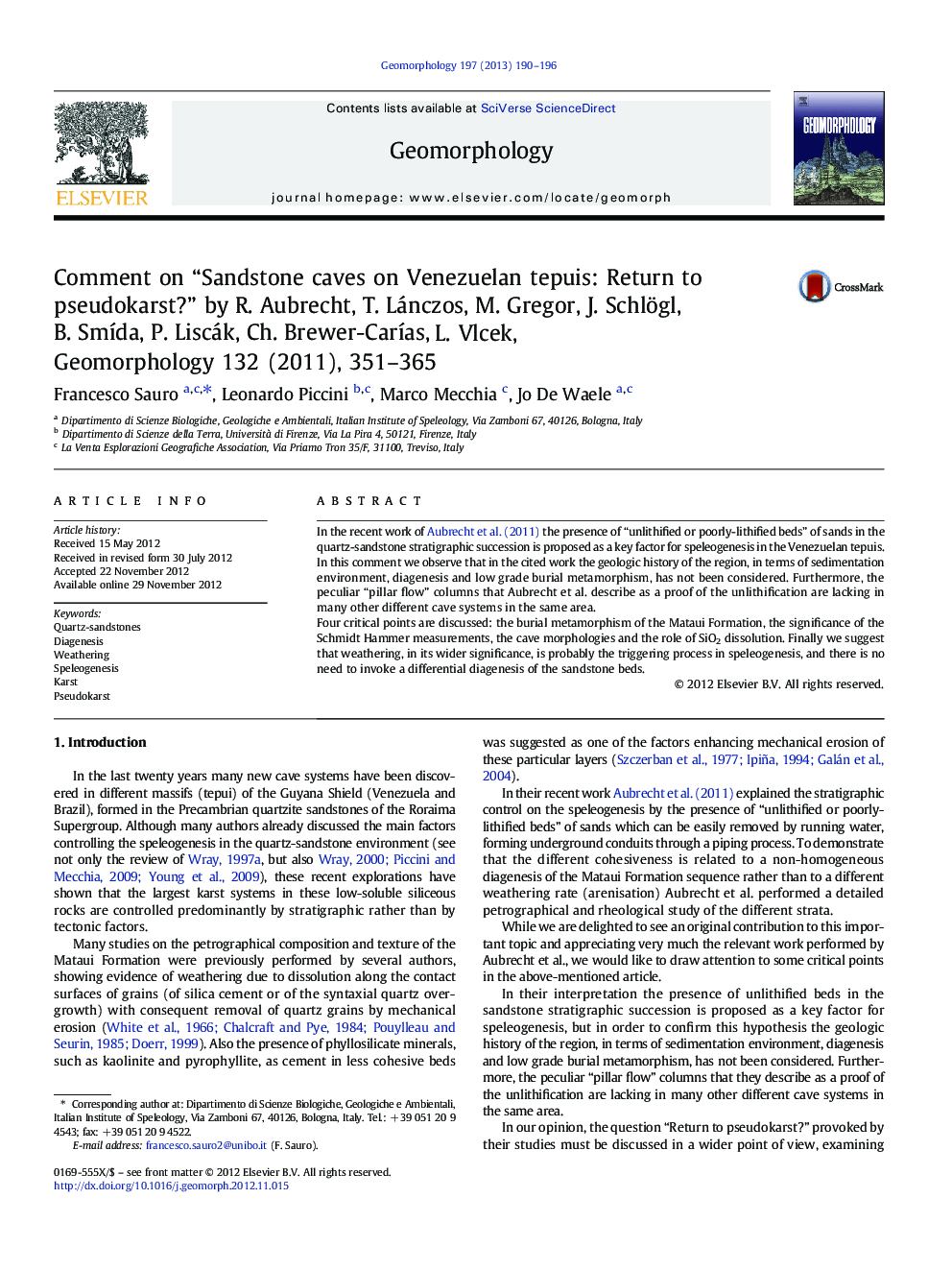| Article ID | Journal | Published Year | Pages | File Type |
|---|---|---|---|---|
| 4684777 | Geomorphology | 2013 | 7 Pages |
In the recent work of Aubrecht et al. (2011) the presence of “unlithified or poorly-lithified beds” of sands in the quartz-sandstone stratigraphic succession is proposed as a key factor for speleogenesis in the Venezuelan tepuis. In this comment we observe that in the cited work the geologic history of the region, in terms of sedimentation environment, diagenesis and low grade burial metamorphism, has not been considered. Furthermore, the peculiar “pillar flow” columns that Aubrecht et al. describe as a proof of the unlithification are lacking in many other different cave systems in the same area.Four critical points are discussed: the burial metamorphism of the Mataui Formation, the significance of the Schmidt Hammer measurements, the cave morphologies and the role of SiO2 dissolution. Finally we suggest that weathering, in its wider significance, is probably the triggering process in speleogenesis, and there is no need to invoke a differential diagenesis of the sandstone beds.
► “Unlithified beds” model is unlikely in sandstones affected by buried metamorphism. ► Schmidt hammer measures are related more to weathering than to diagenesis grade. ► Cave morphologies don't show evidence of the “unlithified beds” speleogenesis. ► Drip water SiO2 content shows that silica dissolution is an active process. ► Quartz sandstone cave development depends on a wide range of weathering processes.
